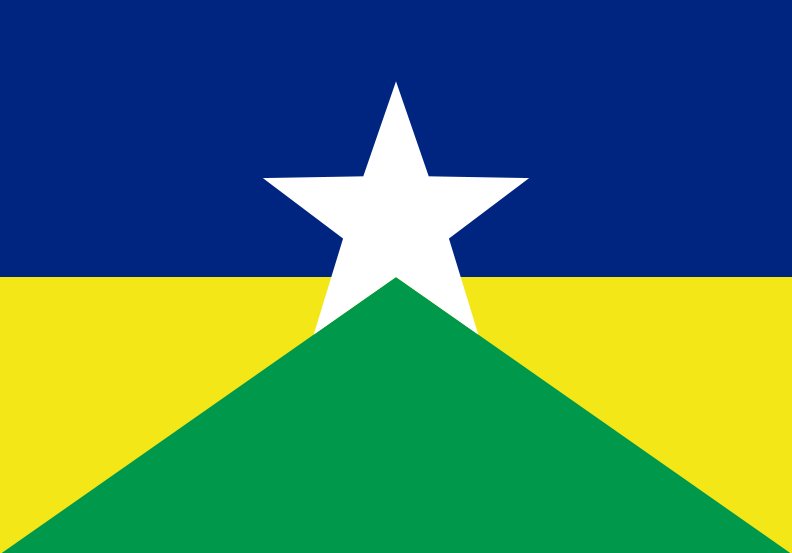|
7. By the way, when I searched for Muhlīfaīn in Wikipedia I couldn't avoid noticing: "Muliphein [γ Canis Majoris] appears on the flag of Brazil, symbolizing the state of Rondônia."
All know there are stars in the flag of Brazil, but few have even heard of Rondônia (located in the upper Amazon basin) or its flag:
I imagine the white star is resting on the peak of a green mountain formed like a pyramid. Could there be a flat top for the great star to rest on? Yes, Egyptian pyramids had such flat tops and on them were placed pyramidions (benben stones), coloured golden in contrast to the white on the rest of the surface. Accordingly white should have gold above, but here we have white at the top and green below (like the white of Moon above the grassy plain beneath the Tree). The 5-pointed star is hardly Sun, instead it should be Venus, and the colour of copper is green. Venus has two faces, its morning phase and its evening phase, and therefore it ought to be represented by 2 colours. Although grass is the first plant to rise again after a brush fire it could be sea-weed which indicates Venus. The foam-born goddess should be where the sea-journey is ending, where the water no longer is immensely deep and the colour of the sea is turning to green by the sunlight reflected from the bottom. This should be the phase immediately before the first 'tree', viz. the Reed:
Maybe the kuhane station Roto Iri Are could then represent Venus, not as I have suggested earlier Jupiter:
|
|||||||||||||||||||||||||||||||||||||||||||||||||||||||||||||||||||||||||||||||||

